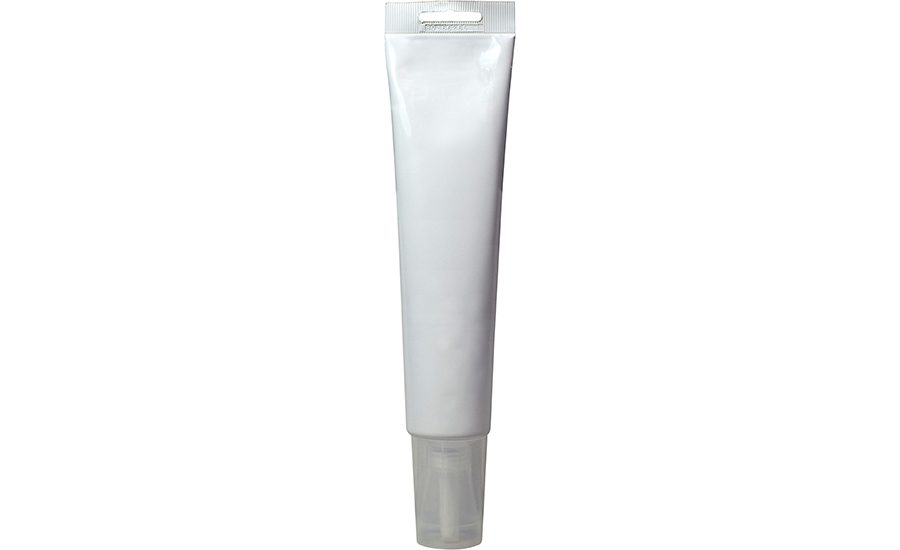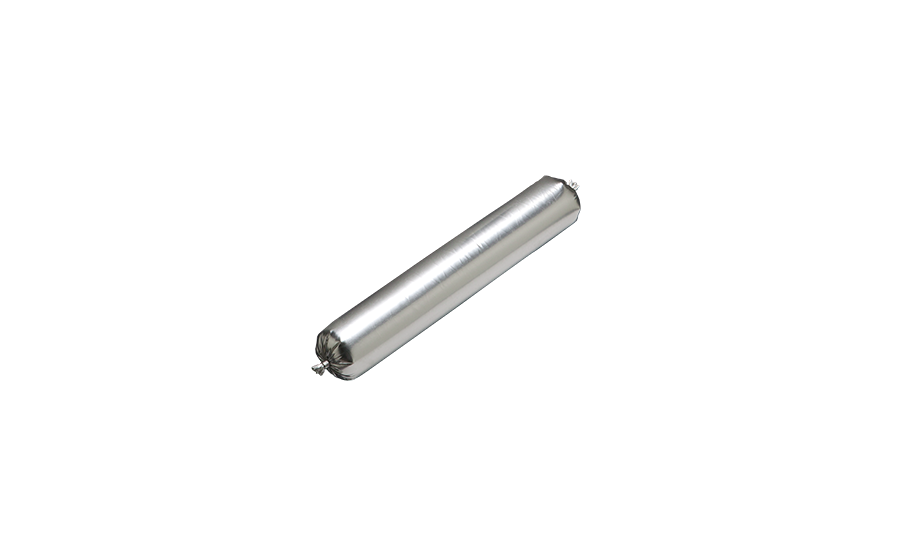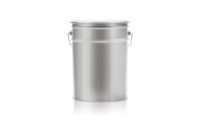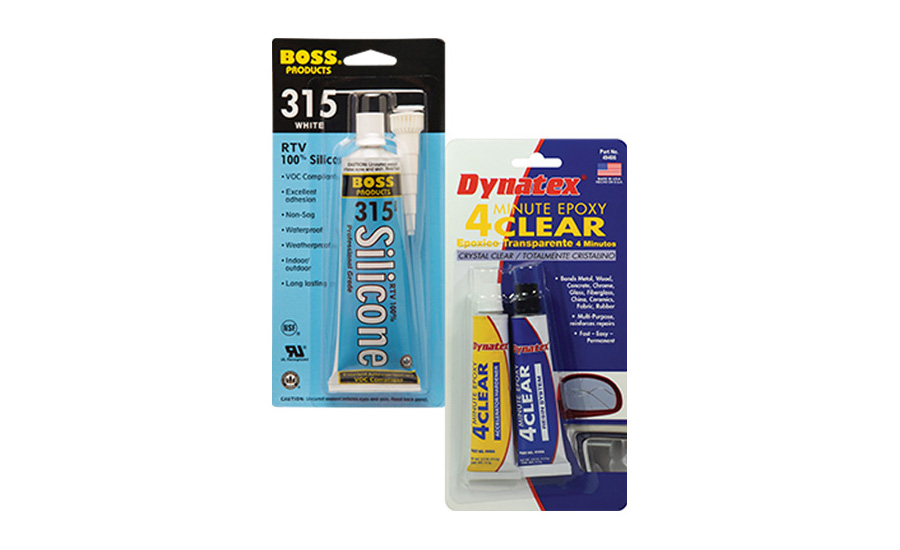Choosing the Ideal Packaging for Sealants and Adhesives
In addition to cost, many factors need to be considered when making packaging decisions for specific sealant and adhesive products.

Aluminum tubes in blister packs.

Plastic squeeze tube.

Sausage pack.



Many different factors should be explored when determining the proper package for a sealant or adhesive. Important considerations include cost, size, compatibility, appearance, ease of disposal, application, and many others—all of which can affect the decision regarding what package system is best for a particular product. Let’s look at an example of how similar factors could apply to a decision many people face on a regular basis.
When you stop at a convenience store to buy water, what do you look for? The store will typically have a variety of sizes available, including 20 oz, 32 oz, and possibly a one-gal container. The bottles are normally available for purchase individually or in cases of 6, 12, or 24 bottles.
From the customer’s perspective, a gallon jug is typically much less expensive per ounce of water than a 20-oz bottle. Why is this the case? The cost to manufacture and bottle water is not that much different for a gallon (128 oz) vs. a 20-oz bottle of water. The jug involves more plastic and water, but those costs are relatively small compared to the labor and other costs associated with the manufacturing and bottling process.
Similarly, purchasing 20-oz bottles of water in cases of 24 is significantly less expensive in terms of cost per bottle than purchasing a single bottle of water. However, many more individual 20-oz bottles of water are purchased from convenience stores than gallon jugs or cases of water bottles. People shopping for water in this setting are interested more in convenience than in purchasing water at the lowest cost.
After all, it is much easier to drink from a 20-oz bottle rather than a gallon jug while driving. Likewise, you may not have room in your car for a case of 24 bottles. You may be able to buy a 20-oz bottle of water for $1, a gallon jug of water for $3, and a case of 24 bottles for $5—but you will choose the 20-oz bottle at the convenience store almost every time, even though the cost per ounce of water is much higher than the other options.
Conversely, someone doing their shopping for the week at a grocery store would be more likely to purchase gallon jugs of water or cases of water bottles than individual 20-oz bottles of water. While convenience is still part of the decision-making process in this setting, efficiency and cost become more important because of the specific situation.
The same type of strategy is often used when determining the proper package for a sealant or adhesive. In addition to cost, many other factors can affect the decision regarding which package is best for a particular product.
Size
The size of the package is a vital factor to consider when deciding how to package a sealant or adhesive. Larger containers typically offer a lower-cost package per unit of volume, but like the water example, convenience is often a significant factor when determining the optimal size of the package. The typical application quantity is often a key item to consider when looking at the size of a container.
For example, a cyanoacrylate adhesive typically requires a relatively small amount of material, so a little tube might be the appropriate package. Conversely, due to the additional volume needed, a highway sealant might be packaged in a large cartridge or a pail. In some situations where a large amount of sealant or adhesive is used, packaging is even done in 55-gal drums.
Sizes of containers commonly used to package sealants and adhesives include cartridges for single-component and two-part products, sausage packs, bottles, jugs, pails, and drums. Many additional types of packaging are also used.
Order Quantity
Similar to size, the order quantity can affect what type of packaging is used for sealants and adhesives. An important question to answer is: How much of the product is normally ordered at a time? The answer can have an impact on the type of package used.
For a product commonly sold to a do-it-yourself (DIY) customer who only needs a small amount of adhesive for a home repair project, the adhesive might be packaged in small tubes that are sold individually. Conversely, a silicone sealant purchased by a waterproofing contractor for use on a high-rise building might be packaged in sausages and sold by the case or pallet.
Application
The application, or the manner in which a sealant or adhesive is used, is another aspect to be considered when determining what package to utilize. A product that will be installed in the field or on a construction jobsite would be more likely to use an easily transportable package such as a cartridge or sausage. On the other hand, a product that is installed in an indoor environment, such as a manufacturing plant or warehouse, might be packaged in a pail or drum, since these situations are more controlled and the dispensing equipment can often be stationary.
Tools/Dispensing Equipment
The type of tools or application/dispensing equipment used can be a key detail to consider for sealant and adhesive packaging. It is important to be aware of any standard dispensing equipment that those in the industry have become accustomed to using. A creative new package might have many advantages, but it may still be difficult to introduce if customers in the market have been using a certain type of dispensing equipment for many years.
If installers in a particular industry typically use a standard caulk gun, for example, it can be challenging to convince them to switch to a specialized applicator gun, particularly if it is more difficult to obtain or more expensive. In fact, some manufacturers have created special cartridges to allow two-part adhesives and sealants to be dispensed using standard caulk guns. Another example can be found in specially designed plungers for cartridges that are used with pneumatic dispensing guns.
Cost
Labor cost is a key factor to consider when evaluating how to package a sealant or adhesive. In fact, the labor cost of installation can be higher than the cost of the product itself—significantly higher, in some cases. As a result, packaging that allows for ease of use and installation is important. For example, 10-oz cartridges are simple to dispense using a standard caulk gun, and changing from one cartridge to the next is quick and efficient. This ease of use helps to minimize the labor cost associated with applying the product.
Of course, the cost of the package itself is something that needs to be evaluated. As previously mentioned, larger-volume packages are typically lower in cost than those for smaller volumes. However, other factors can impact the actual cost of a package as well.
If a small amount of product is typically used per application, for example, small packages can be more cost effective overall since less material is wasted and thrown away. In this scenario, small packages such as syringes and tubes can actually be more cost effective than larger packages.
Reusability
With some sealant and adhesive products or applications, a key characteristic is the ability to use a portion of the product at one time and the remainder of the package later. Products packaged in containers that can be resealed, such as tubes, foam cans, and bottles, as well as cartridges with removable tips/caps, can be more easily reused. This can be helpful in reducing waste. Other types of packages, such as sausages or syringes, do not lend themselves as well to reuse.
Waste/Disposal
Green building and minimizing construction waste has obviously become more important in recent years and is even mandated in many areas. Similarly, ease of disposal after use is also something that can be considered when deciding on packaging a sealant or adhesive.
Lower waste packages that are easier for disposal include sausages and foil packs. Other types of packages that can result in more waste include cartridges and syringes, while larger packages such as drums may result in less waste per unit of volume but can also be more difficult for disposal.
Display
The manner in which a sealant or adhesive is displayed can be a vital part of how it is packaged, particularly when the product is sold into the retail channel. More extravagant packages, such as clamshells, blister packs, multicolored labeling, and elaborate displays, are often used to attract the attention of customers in retail locations.
In other instances, such as industrial applications or products that are sold through construction distributors, this type of packaging is not as important. The extra cost associated with these packages is therefore typically not necessary.
Compatibility
Compatibility between the sealant or adhesive and the packaging material is a complex, critical factor that must be fully evaluated for each product. Reactivity, water vapor transmission rate, porosity, and other factors can affect packaging.
Single-component products that are commonly packaged in cartridges made of high-density polyethylene (HDPE), such as room-temperature vulcanizing (RTV) sealants (e.g., hybrids and silicones), for example, require a thicker cartridge wall to reduce the water vapor transmission rate and allow for a longer shelf life. Cartridges may be waxed or use lubricated plungers to further prevent the transmission of moisture through the plunger cartridge wall interface.
Other products, such as acrylic latex sealants, can be packaged in thinner-wall plastic cartridges, as the water vapor transmission rate is not a concern. Some products, such as polyurethanes, work better with a metal or foil-lined package rather than plastic. Solvent-based products may not be able to be packaged into plastic packages, as they can disturb product integrity. These types of products are often packaged in fiber foil cartridges or metal cans, although some newer solvent-based formulations have been developed to allow stability in plastic containers.
Cartridges for two-part chemical-cure products like polyurethane, epoxy, and acrylic sealants and adhesives are available in materials such as nylon and polypropylene. In unique situations where a two-part product is sensitive to moisture, the polypropylene cartridge might be a best option rather than nylon, again due to the difference in water vapor transmission through the two materials.
When packaging in squeeze tubes, the most effective type of tube is dependent on the material being packaged. Available options include plastic, aluminum, and laminate. In addition, the moisture sensitivity of the product being packaged can determine if a cold seal is required.
Air in the Package
Trapping air—and thus moisture—in the package during the filling process can cause significant issues, particularly with moisture-sensitive products such as silicone, polyurethane, hybrids, and others. Examples of this include cartridges with attached nozzles and no-foil liners, which can leave air entrapped in the nozzle end of the cartridge. Similarly, squeeze tubes without a blind end can also experience the same issue. Many manufacturers have specifically designed packages to minimize the amount of air that gets trapped during filling to reduce this problem.
Finding the Best Option
Overall convenience for the customer is one of the most important factors to consider when making a decision on what packaging system to use for sealants and adhesives. Indeed, as we have discussed, convenience is often the primary criteria used when making packaging decisions, frequently trumping cost and even product quality in some cases.
No single package system is the best option for all sealants and adhesives. Indeed, many different factors need to be considered when determining the proper packaging system. As the example of purchasing water from a convenience store illustrates, many details should be evaluated when deciding what type of packaging system to use with sealants and adhesives. Sealant and adhesive manufacturing and packaging companies are often available as consultants to provide support with the often-complex decision of how best to package a sealant or adhesive.
For additional information, contact the author at jason.bakus@soudal.com or visit www.soudalusa.com.
Looking for a reprint of this article?
From high-res PDFs to custom plaques, order your copy today!












